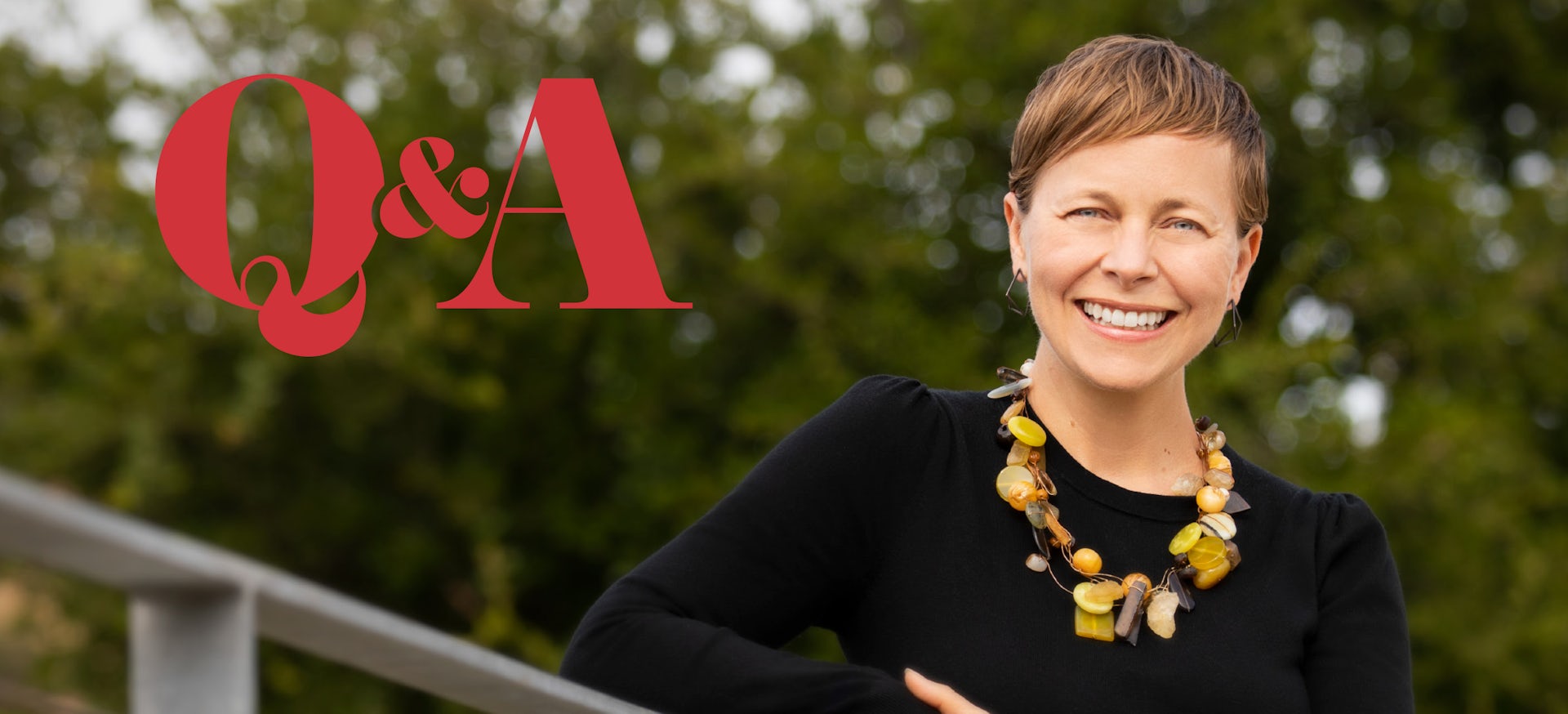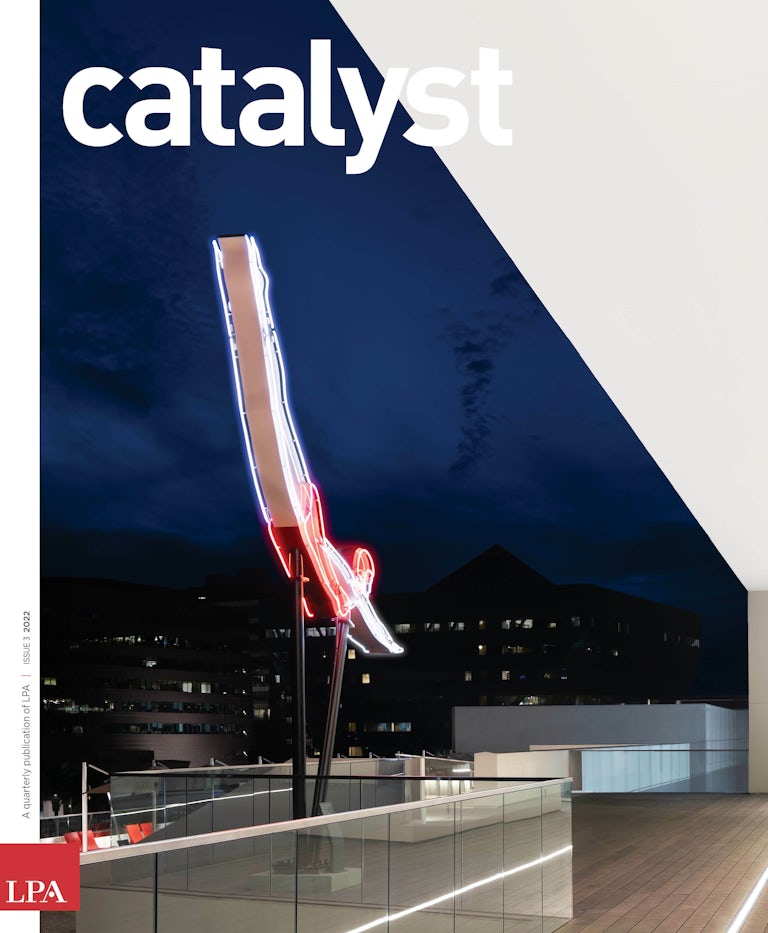The building industry needs to think big to take the next step to counter climate change, says Heidi Creighton, FAIA. Net zero is only part of the equation.
Heidi Creighton, FAIA, is a national advocate for expanding the building industry’s approach to sustainability. After a decade as a principal at the engineering firm Buro Happold, she recently joined Skanska, the international development and construction company, as vice president of sustainability. In that role, she will lead Skanska USA Commercial Development’s strategic sustainable initiatives.
In an interview with Catalyst, she discusses the importance of including the human experience in sustainable design, the influence of environmental, social and governance (ESG) investing and why net zero shouldn’t be the ultimate goal.
Is change simply driven by stronger codes? Or are people more accepting that we need more action?
I think it’s both. There’s the carrot and the stick. The regulations are the stick, but there are some great carrots out there. The younger generations, in particular, are going to be dealing with climate change more than some of us who are getting older. More and more people are going to be putting their money in organizations that are aligned with their values. There’s been a huge upswing in corporate social responsibility and ESG reporting. Companies and organizations are much more transparent than they have been in the past. I think that consumers are really demanding that transparency.
You talk a lot about something we discuss at LPA all the time — the idea of expanding the definition of sustainability. It’s not just about energy performance.
Absolutely. Buildings are for people. We spend 90% of our time indoors. We have a huge responsibility as designers to be advocating for the people who are going to be using the buildings and making sure that we’re giving them the absolute best space to do their work in.
You’ve said net zero is too narrow a goal.
Net zero is a good goal, but I’d love for us all to be pushing beyond that to be positive and to think about every project that we’re doing as regenerative and giving back to the environment and to the people and to the community. With that lens from the very beginning of the project, I think it would help switch the team and help guide the conversations and provide better outcomes.
You have to work to set goals together. It has to be a very collaborative and iterative process. You need that buy in.
You also advocate for incorporating sustainability into long-term planning and urban design.
We need to be thinking at that scale to really move the needle and transform the market. You have these big goals, and you need to create a roadmap to get there.
What have you learned about how to do this planning process effectively on a large scale?
The stakeholder engagement piece is really important. With every organization, you’ve got a variety of staff with a variety of budgets and priorities. You have to work to set goals together. It has to be a very collaborative and iterative process. You need that buy in.
Do you feel like offsets are a way to the primary goal?
Not every building footprint is going to be able to produce enough renewable energy on its rooftop to get to net zero or net positive goals. Offsets need to be part of the solution. So does cleaning our grid. If we’re producing energy with coal and then tying that in with a PV array, that’s not great. The grid really needs to get cleaned up, and then projects need to produce as much on-site as possible.
How do you include that human factor in the process?
We’ve been doing more human-centric workshops, and those have gone really well. People really connect with that. You’re talking about their experience of getting from their home to the project. Maybe that means changing and shower facilities and bike racks. Even something as simple as that can have a huge impact on people’s experience.
Clearly there’s been a change in attitude when you point to that electrification curve. Why are we seeing a shift?
I think it’s a combination of things. If you just look at the economic impacts of these power outages or the economics of what happened in Texas with those winter storms, there’s a huge cost to not be proactive and not be thinking about these resiliency measures and being prepared.
Are there strategies or tools that you think are often overlooked?
On many projects, we need to expand our thinking beyond the community and consider the entire supply chain that’s going to be impacted by the decisions that we make. That includes getting into the materials that we specify and thinking about the communities where those materials are extracted and manufactured, and thinking of the end of life of the material, too. If we’re specifying toxic petroleum-based materials, that’s not good for a lot of people along that supply chain. Decarbonization is a huge conversation now, and it’s really exciting that it’s getting a light shone on it.



